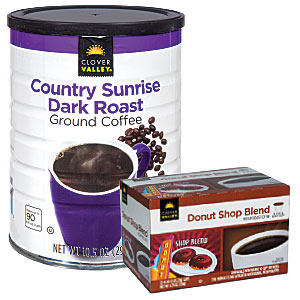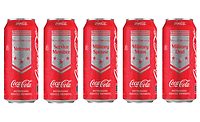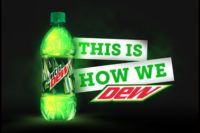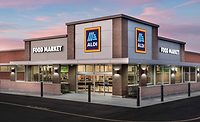Dollar Tree, Dollar General both attempt to acquire Family Dollar
Bottled water, RTD coffee and tea, and aseptic juice sales on the rise in discount channel

During the recession, the countercyclical discount retail channel experienced years of growth, even to the point of becoming one of the fastest-growing retail channels during the time period, according to “Dollar & Variety Stores in the US,” an April 2014 report by IBISWorld. However, as the economy improves, the channel is moving from the growth phase of its lifecycle to a mature phase, the Los Angeles-based market research firm says. This phase likely will be characterized by industry consolidation, it predicts in the report.
|
Just three months after IBISWorld’s report, this consolidation prediction came to fruition with a still-ongoing merger-and-acquisition competition among the Top 3 retailers in the channel. In late July, Chesapeake, Va.-based Dollar Tree Inc. announced that it had entered into a definitive agreement with Family Dollar Stores Inc. to acquire the Matthews, N.C.-based company through a cash-and-stock transaction.
The deal was originally expected to close early this year, with Dollar Tree paying $74.50 per share, a 22.8 percent premium over Family Dollar’s July 25, 2014, closing price, Dollar Tree reports. This amount would be paid as $59.60 in cash and $14.90 in Dollar Tree stock. At closing, Family Dollar shareholders would own between 12.7 and 15.1 percent of the outstanding Dollar Tree common stock, it says.
Bob Sasser, chief executive officer of Dollar Tree, noted in a statement that the acquisition would help the retail chain to extend its reach to lower-income customers and enable the combined company to open more stores under both banners.
However, three weeks after this agreement’s announcement, Dollar General Corp., Good-lettsville, Tenn., submitted a counteroffer to acquire Family Dollar for $4 more per share in cash or $9.7 billion. Dollar General Chairman and Chief Executive Officer Rick Dreiling noted in a statement that the company was prepared to divest as many as 700 retail stores in order to achieve the requisite antitrust approvals and fund the $305 million break-up fee if Family Dollar elected to terminate its agreement with Dollar Tree.
Three days after receiving the “unsolicited” offer, Family Dollar reported that it rejected the offer based on antitrust regulatory considerations and planned to continue its agreement with Dollar Tree. In response, Dollar General enhanced its offer to $80 per share; divestiture of 1,500 stores, if needed, to obtain antitrust approvals; and $500 million to fund any break-up fees with Dollar Tree. The Family Dollar board unanimously rejected the enhanced offer, also on the basis of antitrust regulatory considerations.
Despite these rejections, Dollar General remained committed to forging a new agreement, twice extending its offer to as late as Jan. 30 and working with the Washington, D.C.-based Federal Trade Commission (FTC) to arrange potential divestitures needed for the acquisition.
In the meantime, Family Dollar and Dollar Tree have been working with the FTC to support their original agreement. The FTC has reported concerns regarding overlaps between Family Dollar and Dollar Tree deals, certain areas where the two banners face a limited number of competitors, and Family Dollar’s current pricing rules applicable to certain stores where prices might increase if a local Dollar Tree is not present, according to a Dollar Tree press release. However, Dollar Tree reported in December 2014 that it expects to complete the financing for the pending merger by January and complete the merger as early as February.
Hunting for deals
Outside of this internal competition, the overall channel is performing well, says Susan Viamari, editor of Thought Leadership for Information Resources Inc. (IRI), Chicago. “About two-thirds of the U.S. population shops the channel, and this figure is on the rise,” she says. “During the past year, retail sales in the dollar channel topped $13 billion.”
The recession likely is to credit for the wide range of consumers shopping the channel, according to IBISWorld’s report. From 2009-2011, 53 percent of dollar and variety store shoppers identified themselves as poor or middle-income consumers, IBISWorld says, citing data from Deloitte LLP, Chicago. These consumers often drove sales during the week prior to payday, attempting to stretch their budgets and purchasing small essentials, and the week after payday. This shopper behavior has driven the channel to offer consumer packaged goods (CPG) products in smaller packages and quantities to make them more affordable for the shopper trying to stretch his or her budget, as opposed to investing more money at once to buy in bulk, the report states.
During the recession, middle-class consumers also started shopping the channel more frequently in order to take advantage of discounted prices. Consumers with annual incomes greater than $50,000 also shop the channel to purchase products such as gift bags and stationary, which tend to offer the same quality as pricier options, the report notes. To continue to draw in these consumers, many stores in the channel invested in aesthetic upgrades, including wider aisles and improved customer service, to make the shopping experience more enjoyable, it says.
Some stores also enacted different pricing strategies to profit from this increased market penetration. “They used promotions to attract customers into the store and then sold certain items at a higher price point while offering promotions on other items,” IBISWorld’s report states. “This increased the average consumer’s basket size and enabled stores to maintain growth.”
However, as the economy continues to improve, IBISWorld predicts that some consumers will return to their pre-recession shopping habits and switch to other retail channels. The market research firm expects that the channel will contract at an annualized rate of 1.4 percent to $50.7 billion, down from IBISWorld’s tracked $54.4 billion in 2014, during the five years to 2019.
Liquid sales
On the flipside, many of the aesthetic and product-offering upgrades made by the channel in recent years could help retain some of these shoppers, particularly those who still are sticking to their conservative shopping behaviors. In an attempt to entice more middle-class consumers and help eliminate some of the stigma of shopping the channel, some retailers now offer both national and private-label brands. For example, in the CPG category, Dollar General sells both Maxwell House and Dunkin Donuts coffee brands in addition to its private-label line Clover Valley.
Of all items sold in the dollar and variety stores channel, groceries make up 22.4 percent of offerings, IBISWorld reports. This represents the second-biggest product category, after “others,” for the channel. Discount retailers also capture 2.3 percent of total beverage spending, IRI’s Viamari says.
Total beverage sales in the channel reached about $1.6 billion in the past year, remaining flat compared with the previous year, Viamari notes. More specifically, bottled water sales in the channel grew 12.8 percent, ready-to-drink coffee and tea sales increased 18.7 percent, and aseptic juices grew 18.1 percent, she says.
“Home-based eating and drinking continues to be quite pervasive, as consumers are holding tight to conservative purchase behaviors,” Viamari says. Nonetheless, they are seeking excitement, indulgence, and health and wellness. Powerful products are those that offer fresh and exciting flavors, a strong nutritional punch, and portable satiation. [These] will continue to make a big splash throughout 2015.”
Looking for a reprint of this article?
From high-res PDFs to custom plaques, order your copy today!







